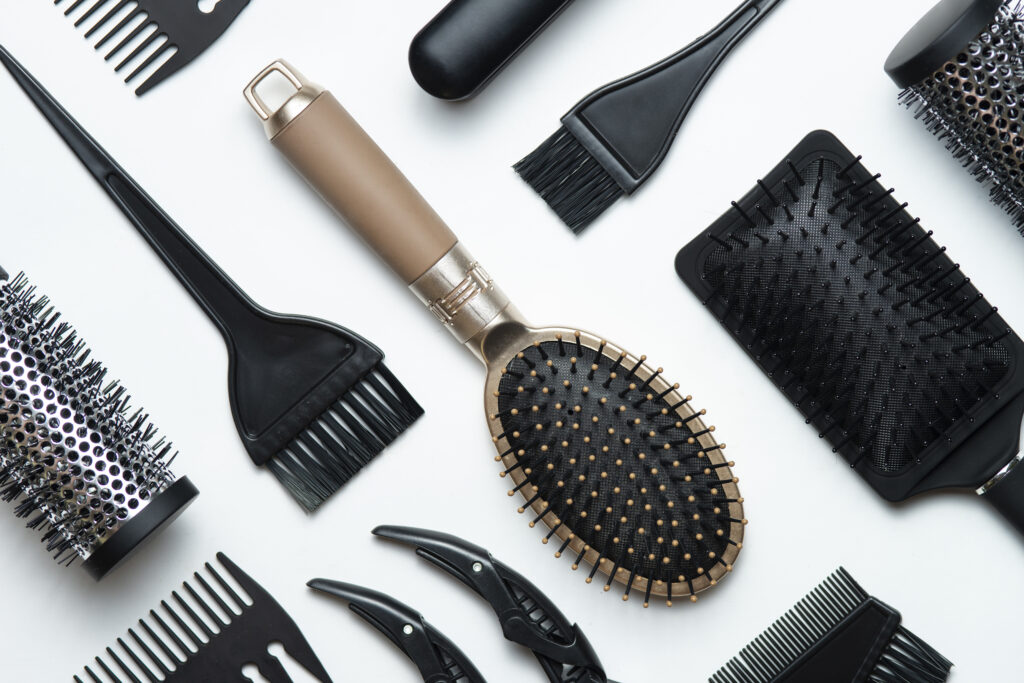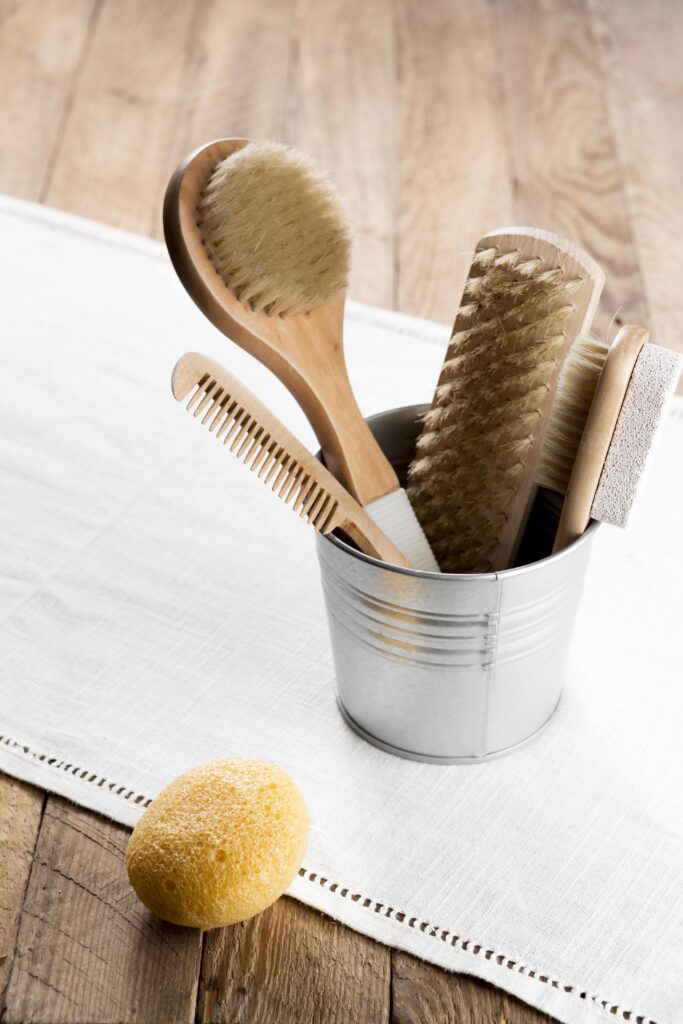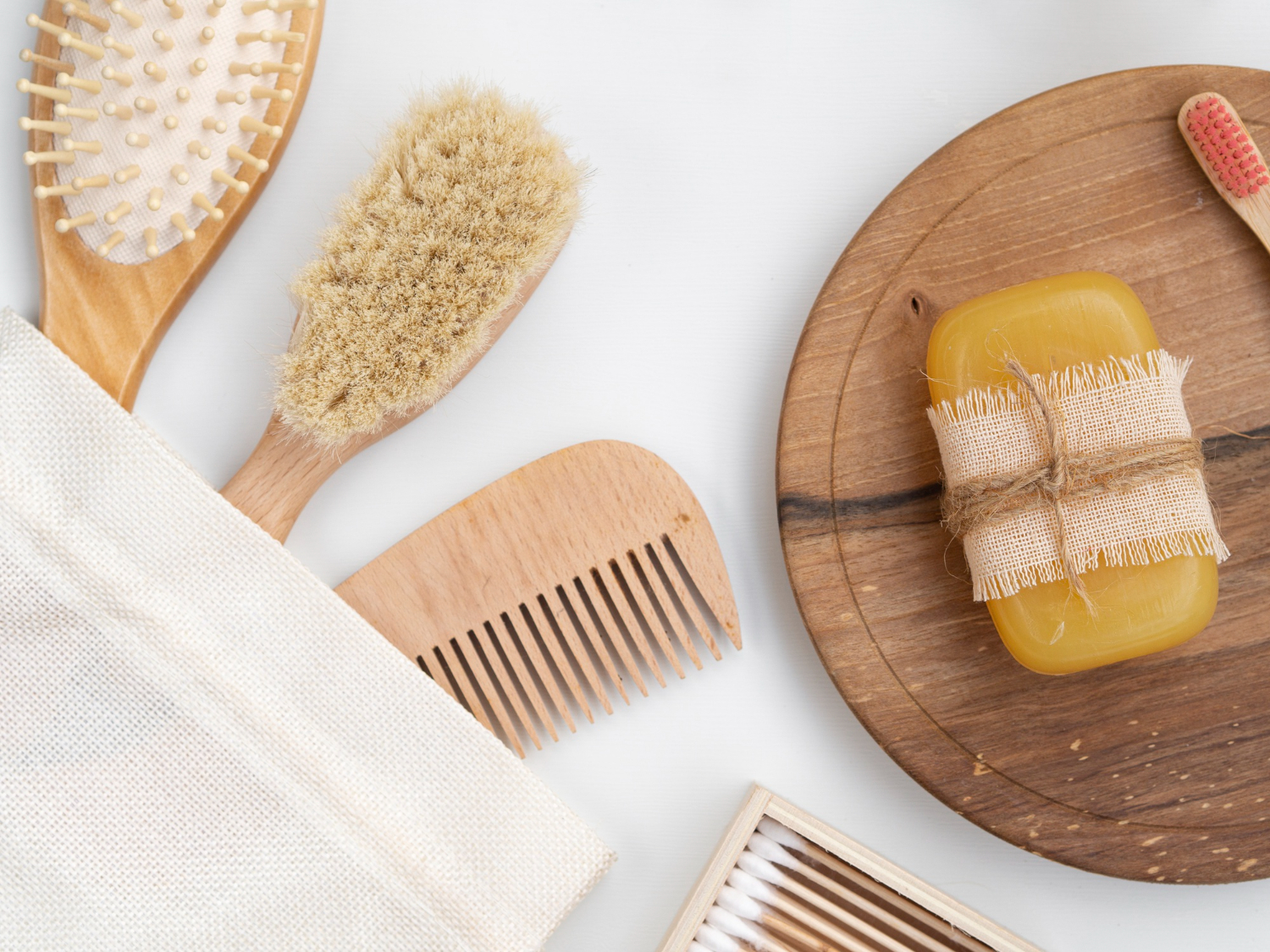Cleaning hair brushes is just as important as washing your hair. Skip it, and you’re undoing all your hair care efforts.
A brush packed with hair, oils, product residue, and dust doesn’t just look unappealing; it can spread bacteria, cause frizz, and even trigger scalp irritation.
The good news? With the correct methods, you can clean your hairbrush quickly and effectively, no matter the type. A fresh brush means shinier hair, a healthier scalp, and longer-lasting styling tools.
Below, you’ll find a complete guide with a cleaning frequency table, tool recommendations, safe sanitizing methods, and tips for knowing when it’s time to replace your brush.
Why Cleaning Hair Brushes Is Essential

Hairbrushes collect product residue, dead skin cells, oils, and dust mites with every use. Over time, this buildup:
- Redistributes dirt back into clean hair
- Causes frizz, tangles, and greasy roots
- Harbors bacteria and yeast, potentially leading to dandruff or scalp irritation
- Reduces brush effectiveness
💡 Tip: If you struggle with dandruff, keeping your brush clean is as important as choosing the right shampoo.
Experts, including certified trichologists, warn that unclean hairbrushes can transfer bacteria, yeast, and product buildup back to the scalp, causing dandruff, greasiness, irritation, and in severe cases, infections.
How Often Should You Clean Your Hairbrush?

Cleaning frequency depends on your hair type, styling habits, and brush material. Here’s a quick reference:
| Hair Type / Use Case | Frequency | Why It Matters |
|---|---|---|
| Heavy product use (hairspray, gels, serums) | Weekly | Prevents sticky buildup & bacterial growth |
| Oily hair or dandruff | Weekly | Stops oil & flakes from spreading |
| Normal hair, moderate product use | Every 2 weeks | Keeps brush fresh without overcleaning |
| Dry hair, minimal product use | Monthly | Prevents static & bristle wear |
| Fine or curly natural hair | Weekly | Avoids snagging from residue buildup |
| Thick or coarse hair | Every 2 weeks | Maintains smooth detangling performance |
📌 Daily habit: Remove loose hair after each use to prevent compacted buildup between deep cleans.
Especially if you’re dealing with oily scalp or dandruff, cleaning your brush ties directly into healthier scalp management, something we delve deeper into in our article on How To Treat Oily Dandruff: 8 Tips for a Healthy Scalp.
Step-by-Step: How to Clean Hair Brushes

1. Remove Hair & Lint
- Use your fingers, a tail comb, or a brush-cleaning rake to pull out hair strands.
- For stubborn lint, try tweezers or a pointed object like a chopstick.
2. Prepare a Cleaning Solution
- Plastic/Synthetic brushes: Mix warm water + a few drops of mild shampoo or liquid soap in a bowl.
- Wooden/Natural bristle brushes: Use mild sulfate-free shampoo with warm water — but dip only the bristles. Avoid soaking to prevent warping.
✨ Tip: Add 1 tsp baking soda for extra degreasing power.
3. Sanitize (Optional but Recommended)
- For synthetic brushes only, dip the bristles in 50–70% isopropyl alcohol for 10–15 seconds after washing.
- This helps kill bacteria without damaging materials.
4. Scrub Gently
- Use an old toothbrush to clean between bristles and around the base.
- For metal-barrel round brushes, scrub thoroughly to remove residue.
5. Rinse & Dry Properly
- Rinse under lukewarm water (bristles only for wood/natural).
- Shake off excess water.
- Drying tip: Place bristle-side down or up (depending on design) on a towel in a ventilated area.
Brush-Specific Cleaning Chart
Different brushes need different care. Here’s a quick chart to guide you based on what type you use.
| Brush Type | How to Clean | Soaking Allowed? | Drying Tip |
|---|
| Plastic / Synthetic | Remove hair by hand or with a comb. Soak in warm water + clarifying shampoo for 5–10 minutes. Scrub bristles with a toothbrush. Rinse well. | ✅ Yes (5–10 min) | Air-dry bristle-up on a towel. |
| Boar Bristle | Remove hair. Mix warm water + gentle shampoo. Dip only the bristles; scrub gently with fingers/toothbrush. Rinse quickly. | ⚠️ Partial (bristles only) | Dry the bristles overnight. |
| Round Brush | Use a tail comb to pull out hair. Mix warm water + shampoo or baking soda. Scrub thoroughly around the metal barrel. | ✅ Yes (short soak) | Stand upright to prevent rust. |
| Paddle Brush | Clean like a plastic brush, but gently rinse around the padded cushion. Don’t soak the cushion directly. | ⚠️ Limited (avoid cushion) | Air-dry bristle-up on a towel. |
Tools That Make Cleaning Easier
- Tail comb – great for lifting out hair strands
- Old toothbrush – scrubs the bristle base effectively
- Brush-cleaning rake – removes lint & hair quickly
- Small bowl – for targeted soaking of bristles
Avoid Harsh Cleaning Methods
Experts recommend avoiding:
- Boiling water – warps plastic and damages bristles
- Bleach – weakens materials and irritates the scalp
- Extended soaking for wood causes swelling, cracking, or mold growth
Safe Vinegar Use for Natural Bristles

A diluted mix of 1 part white vinegar to 3 parts water can help dissolve residue and kill bacteria.
- Only dip bristles briefly.
- Rinse immediately.
- Avoid prolonged soaking — especially for synthetic brushes, as vinegar can degrade adhesives.
When To Replace Your Brush

Even with proper care, brushes wear out. Replace if:
- Bristles are bent, frayed, or missing
- There’s a lingering buildup or odor
- The cushion or barrel is damaged
⏳ General rule: Every 6–12 months for daily-use brushes.
Clean Brushes Equal Healthy Hair
With a clean brush, you distribute natural oils evenly, reducing frizz and tangles. It keeps your scalp healthy and extends the life of your styling tools.
So, treat your hairbrush like your favorite hair product, keep it fresh, and it’ll keep your hair looking its best. And if it’s time for a professional refresh, you can book your next salon visit here.
FAQ
What is the gray fuzz in the hairbrush?
The gray fuzz is a mix of dust, product buildup, and hair. We naturally shed hair and form a grayish mess, which is a normal process. There is no need to worry about it. However, it is essential to clean your brush to keep it fresh.
Is vinegar safe for all hairbrushes?
No. Use diluted vinegar only for natural bristle brushes, and never soak synthetic or wooden handles for long periods.
What do salons use to keep their hair brushes clean?
Salons soak their hair brushes and combs in a liquid called Barbicide and wash them with soap and water.
Is there an easy, effective way to clean a hairbrush?
Run and fill a sink or bowl with hot water, a splash of dish soap, and vinegar. Let the brushes sit completely submerged for about 10 minutes.
What if your brush is sealed or wooden—how do you avoid mold?
If your brush is sealed or wooden, avoid submerging it in water. Instead, spot-clean with a damp cloth and mild shampoo, keeping water away from the handle. Always dry it bristle-side down in a well-ventilated area to prevent mold.









